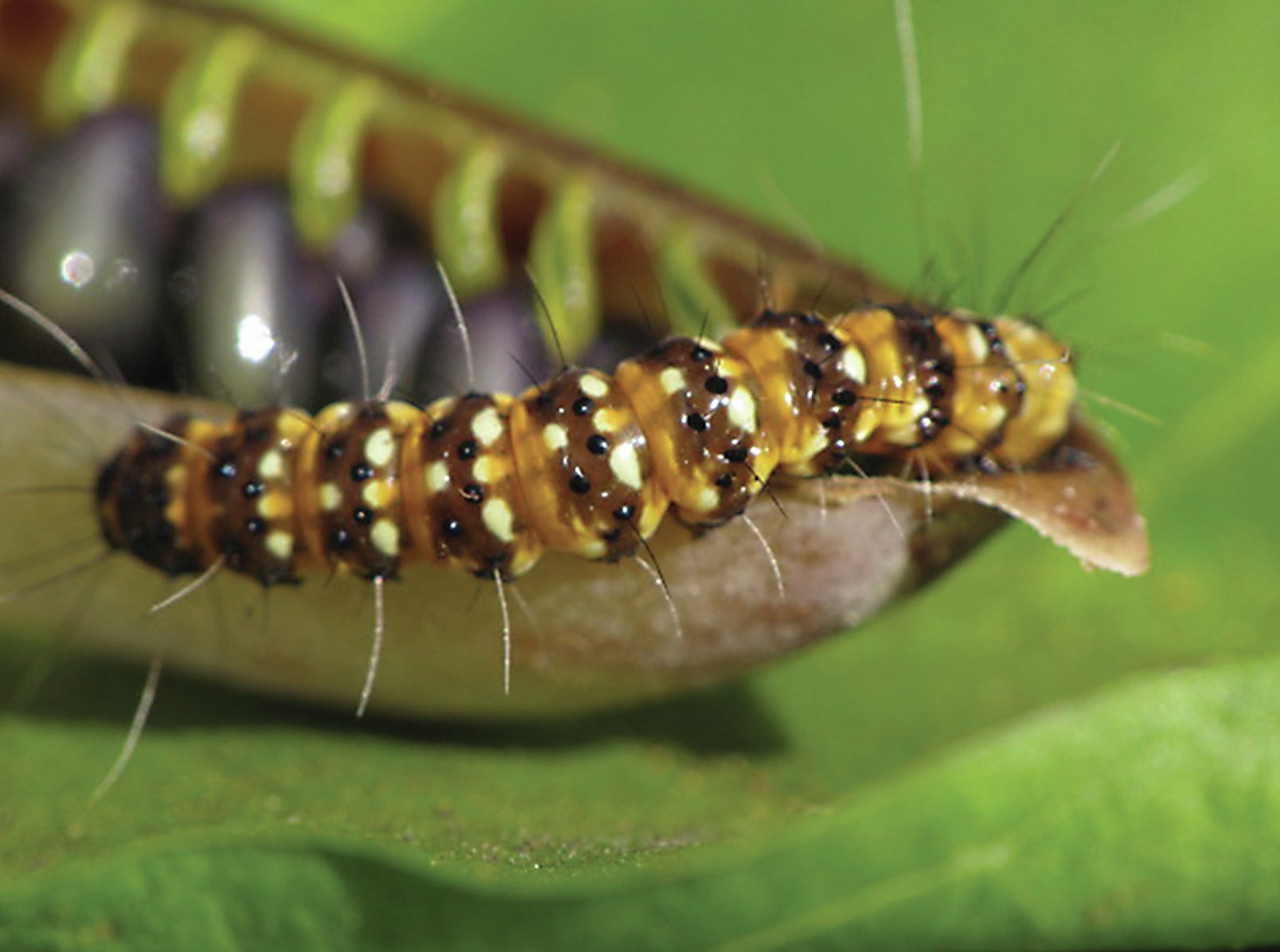
To a hungry spider, bumping into a juicy, newly hatched caterpillar could appear as if dinner is served — or maybe not. The caterpillar in Figure 1 is the offspring of a bella moth and was given a particularly useful gift by its parents — poisonous pyrrolizidine alkaloids (PAs). These PAs make the caterpillar taste repulsive.
Bella moths (Utetheisa ornatrix) store toxins contained in the plants they ate when they were caterpillars. This helps to defend them against predators such as spiders and bats. The caterpillars get these alkaloids by eating the leaves and pods of rattlebox (Crotalaria) plants (see Figure 2) and they retain the toxins throughout their development all the way into adulthood (see Figure 3). But if you’re a male moth, the amount of PAs you store as a caterpillar doesn’t just make you less attractive to predators, it may also help you find a mate.
Your organisation does not have access to this article.
Sign up today to give your students the edge they need to achieve their best grades with subject expertise
Subscribe




